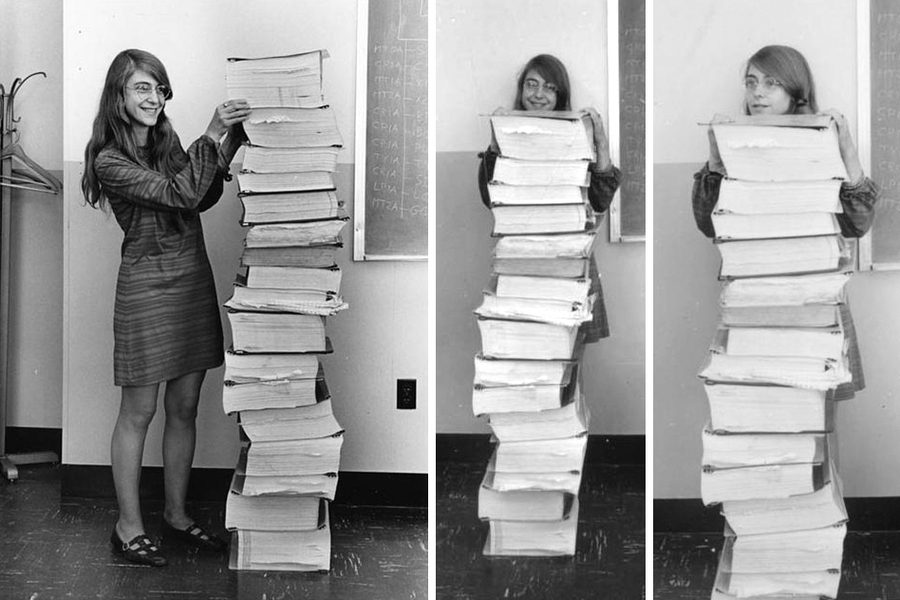Half a century ago, MIT played a critical role in the development of the flight software for NASA’s Apollo program, which landed humans on the moon for the first time in 1969. One of the many contributors to this effort was Margaret Hamilton, a computer scientist who led the Software Engineering Division of the MIT Instrumentation Laboratory, which in 1961 contracted with NASA to develop the Apollo program’s guidance system. For her work during this period, Hamilton has been credited with popularizing the concept of software engineering.
In recent years, a striking photo of Hamilton and her team’s Apollo code has made the rounds on social media and in articles detailing her key contributions to Apollo 11's success. According to Hamilton, this now-iconic image (at left, above) was taken at MIT in 1969 by a staff photographer for the Instrumentation Laboratory — later named the Draper Laboratory and today an independent organization — for use in promotion of the lab’s work on the Apollo project. The original caption, she says, reads:
“Here, Margaret is shown standing beside listings of the software developed by her and the team she was in charge of, the LM [lunar module] and CM [command module] on-board flight software team.”
Hamilton, now an independent computer scientist, described for MIT News in 2009 her contributions to the Apollo software — which last month was added in its entirety to the code-sharing site GitHub:
“From my own perspective, the software experience itself (designing it, developing it, evolving it, watching it perform and learning from it for future systems) was at least as exciting as the events surrounding the mission. … There was no second chance. We knew that. We took our work seriously, many of us beginning this journey while still in our 20s. Coming up with solutions and new ideas was an adventure. Dedication and commitment were a given. Mutual respect was across the board. Because software was a mystery, a black box, upper management gave us total freedom and trust. We had to find a way and we did. Looking back, we were the luckiest people in the world; there was no choice but to be pioneers.”
Have a creative photo of campus life you'd like to share? Submit it to Scene at MIT.






